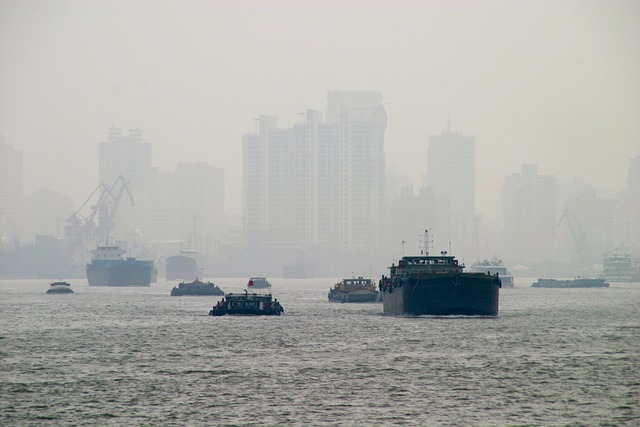With emissions surging and targets drifting out of reach, China faces a critical juncture in its journey towards sustainability. The article explores the factors driving this challenge and the potential pathways forward as the nation grapples with balancing economic growth and environmental responsibility.

Record Drop in China’s CO2 Emissions
China's journey towards environmental sustainability faces a pivotal moment as it grapples with a pressing challenge: reducing carbon dioxide (CO2) emissions amidst a backdrop of rapid economic growth. The stakes are high, with the government aiming to slash CO2 emissions by 4 to 6 per cent by 2025 to meet its ambitious "carbon intensity" target. However, recent data suggests a different narrative, one of increasing emissions and mounting pressure to reverse the trend.
In 2023, China witnessed a concerning uptick in CO2 emissions, soaring by 5.2 per cent, mirroring the trajectory of its GDP growth. This surge can be attributed to several factors, including a surge in electricity demand fueled by coal power and a rebound in oil consumption following the zero-Covid era. Such trends paint a picture of an economy reliant on carbon-intensive practices, veering off course from its climate commitments.
A deeper dive into the numbers reveals a disconcerting trend: China's CO2 emissions have surged by 12 per cent since 2020, propelled by a frantic energy response to the Covid-19 pandemic. This surge places immense pressure on China to reverse course, with emissions needing to plummet by 4-6 per cent by 2025 to align with its carbon intensity goals. Failure to do so risks derailing not just environmental targets, but also crucial climate pledges under the Paris Agreement.
The urgency to meet these targets is palpable, with China's credibility on the line. The government's revised climate pledge underscores the gravity of the situation, emphasizing the need to "strictly limit" coal demand growth and "strictly control" new coal power capacity. Yet, with emissions soaring and targets slipping out of reach, the window for action is narrowing, prompting calls for immediate intervention.
Challenges and Opportunities
The path forward is fraught with challenges, but not without hope. China's clean energy sector offers a beacon of possibility, with the potential to propel the nation towards its climate goals. A surge in clean energy installations, particularly solar power, signals a promising trajectory. However, sustaining this momentum is key, requiring a concerted effort to accelerate renewables deployment and curb energy demand growth.
The road ahead is fraught with uncertainty, but also ripe with opportunity. China stands at a crossroads, tasked with navigating the delicate balance between economic growth and environmental stewardship. The choices made today will reverberate for generations to come, shaping the fate of not just China, but the planet as a whole. As environmental engineers, the challenge is clear: to innovate, adapt, and usher in a new era of sustainability in the world's largest emitter of CO2.
The Economic Implications
Beyond environmental concerns, China's failure to meet its emissions targets carries significant economic implications. With mounting pressure from both domestic and international stakeholders, there's a growing recognition that sustainability is not just a moral imperative but also an economic necessity.
Investors are increasingly factoring in environmental performance when making investment decisions, with green finance gaining traction as a viable avenue for funding sustainable projects. Failure to demonstrate a commitment to reducing emissions could result in capital flight and diminished investor confidence, hampering China's economic growth prospects.
Moreover, the transition to a low-carbon economy presents significant opportunities for innovation and job creation. Investing in clean energy infrastructure and technologies not only mitigates environmental risks but also stimulates economic growth, driving productivity gains and fostering job creation across various sectors.
The Role of Policy
Central to China's ability to meet its emissions targets is the effectiveness of its policy interventions. While the government has outlined ambitious climate goals, translating these into actionable policies requires a concerted effort across multiple fronts.
Tightening regulations on coal consumption and emissions-intensive industries, coupled with incentives for clean energy adoption, can accelerate the transition to a low-carbon economy. Additionally, investing in research and development to advance clean energy technologies and improve energy efficiency will be crucial in achieving long-term sustainability goals.
International Collaboration
Addressing climate change is a global endeavor that requires collective action from all nations. China, as the world's largest emitter of CO2, holds a unique responsibility to lead by example and collaborate with other countries to mitigate the impacts of climate change.
Through international partnerships and agreements, China can leverage global expertise and resources to accelerate its transition to a low-carbon economy. Collaborative initiatives such as the Paris Agreement provide a framework for coordinated action, enabling countries to pool their efforts towards a common goal of combating climate change.
China's record drop in CO2 emissions presents a critical challenge that demands urgent attention and decisive action. As the nation grapples with the dual imperatives of economic growth and environmental sustainability, the choices made in the coming years will shape the trajectory of its development and have far-reaching implications for the global climate.
By harnessing the power of innovation, policy intervention, and international collaboration, China can overcome the challenges posed by rising emissions and chart a course towards a sustainable future. The time for action is now, and the stakes could not be higher.


